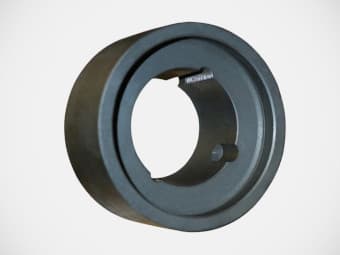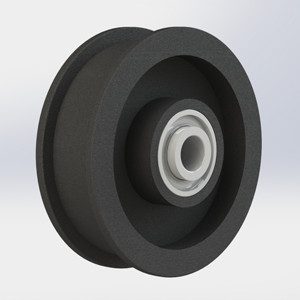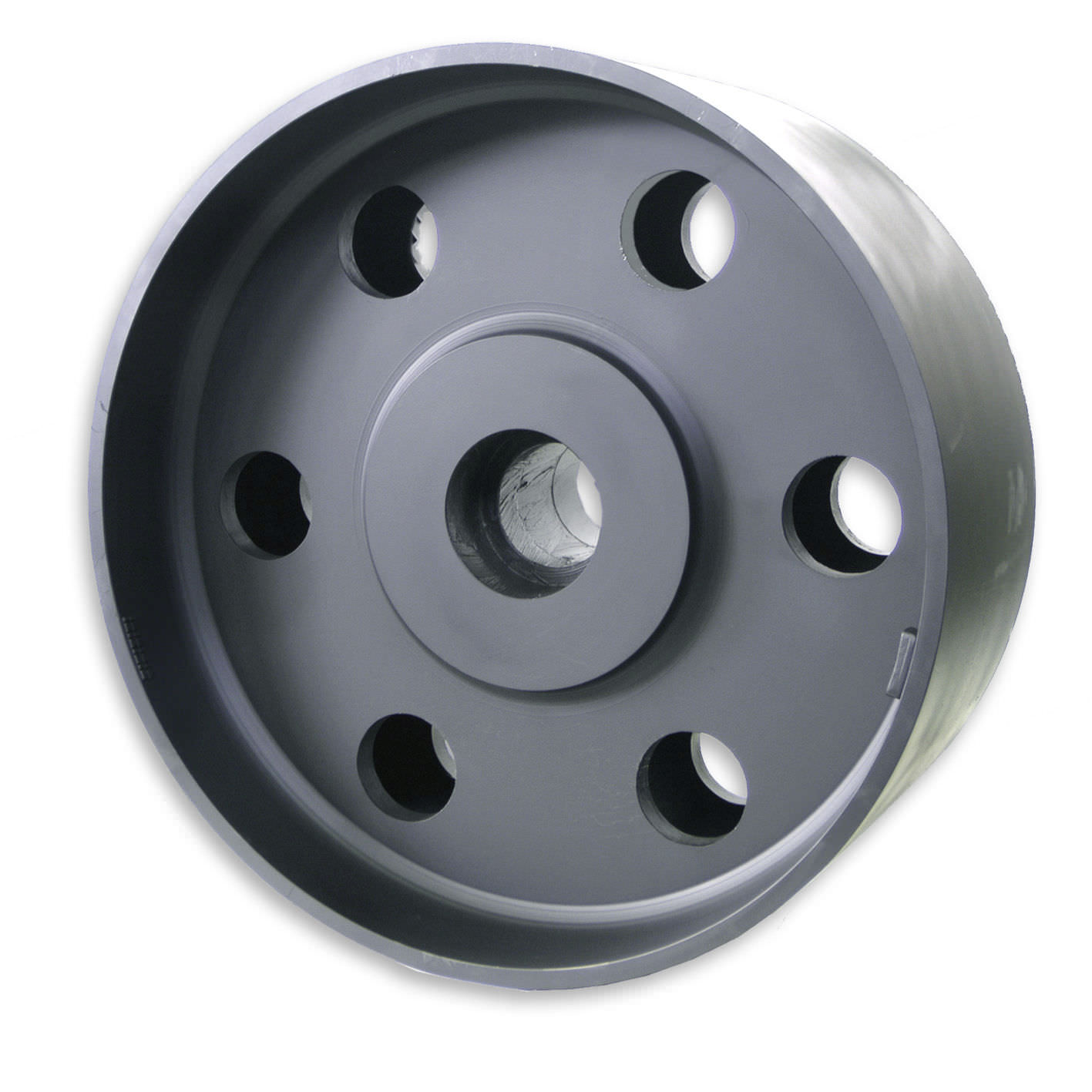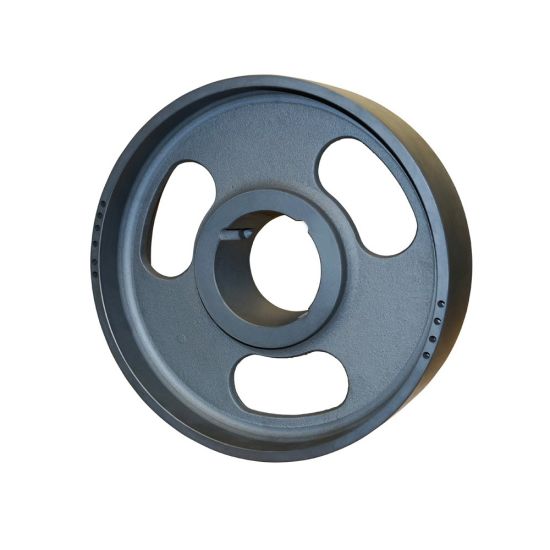Product Description
OEM ODM Accessories 20 Teeth Flat Belt Idler Pulley With 2gt 5gt Mxl XL 3m 8m
Synchronous belt pulley transmission is composed of an annular belt with equidistant teeth on the inner peripheral surface and a belt pulley with corresponding teeth. During operation, the belt teeth mesh with the tooth slots of the belt pulley to transmit motion and power. It is a new belt transmission that integrates the respective advantages of belt transmission, chain transmission and gear transmission.
Product Parameters
| Product | standard timing belt pulley & idler pulley |
| Customized | OEM, drawings or samples customized |
| Teeth type | Normal Torque Drive Type:MXL,XL,L,H,XH,XXH High Torque Drive Type:S2M,S3M,S5M,S8M,HTD2M,HTD3M,HTD5M,HTD8M,P2M,P3M,P5M,P8M High Precision Position Drive Type:2GT,3GT,5GT,8YU Light Load Drive Type:T5,T10,T20 Heavy Load Drive Type:AT5,AT10,AT20 |
| Basic shape | Type A,Type B,Type D,Type E,Type F,Type K |
| Adaption | Adapt to 1/4 inch,5/16 inch,1/2 inch, 3/8inch, 2/25inch, 1/5inch belt |
| surface treatment | Natural color anodizing,Black anodizing,Hard anodizing,Ni-plating,Blackening |
| Material | 6061(aluminum),S45C(45# steel),SUS304(Stainless steel) |
| Bore | Pilot bore, Taper bore and Customized bore. |
| Tolerance Control | Outer diameter ±0.005mm Length dimension ±0.05mm |
| Standard | DIN, ISO/GB, AGMA, JIS |
| Teeth Accuracy | DIN Class 4, ISO/GB Classs 4, AGMA Class 13, JIS Class 0 |
| Weight | Max 15Tons |
| testing equipment | projecting apparatus,salt spray test,durometer,and coating thickness tester,2D projector |
| producing equipment | CNC machine,automatic lathe machine,stamping machine,CNC milling machine,rolling machine,lasering,tag grinding machine etc. |
| Machining Process | Gear Hobbing, Gear Milling, Gear Shaping, Gear Broaching,Gear Shaving, Gear Grinding and Gear Lapping |
| Application industry | Robot industry,Medical industry,Making machine industry,Automation industry,3C industry equipment,Packaging industry,UAV industry,New energy industry. |
Company Profile
Packaging & Shipping
| lead time | 10-15 working days as usual,30days in busy season,it will based on the detailed order quantity |
| Delivery of samples | by DHL,Fedex,UPS,TNT,EMS |
FAQ
| Main Markets | North America, South America, Eastern Europe , West Europe , North Europe, South Europe, Asia |
| How to order | * You send us drawing or sample |
| * We carry through project assessment | |
| * We give you our design for your confirmation | |
| * We make the sample and send it to you after you confirmed our design | |
| * You confirm the sample then place an order and pay us 30% deposit | |
| * We start producing | |
| * When the goods is done, you pay us the balance after you confirmed pictures or tracking numbers. | |
| * Trade is done, thank you! |
/* January 22, 2571 19:08:37 */!function(){function s(e,r){var a,o={};try{e&&e.split(“,”).forEach(function(e,t){e&&(a=e.match(/(.*?):(.*)$/))&&1
| Certification: | CE, ISO |
|---|---|
| Pulley Sizes: | Type A |
| Manufacturing Process: | Forging |
| Material: | Stainless Steel |
| Surface Treatment: | Polishing |
| Application: | Chemical Industry, Grain Transport, Mining Transport, Machinery Parts |
| Samples: |
US$ 15/Piece
1 Piece(Min.Order) | |
|---|
| Customization: |
Available
| Customized Request |
|---|

Can flat belt pulleys be part of woodworking and milling equipment?
Yes, flat belt pulleys can be an integral part of woodworking and milling equipment. Here’s a detailed explanation:
1. Power Transmission:
Flat belt pulleys are commonly used in woodworking and milling equipment to transmit power from a motor or engine to various components. They serve as driving pulleys, connecting the power source to critical machine parts such as saw blades, cutters, drills, or spindles. The efficient power transmission facilitated by flat belt pulleys ensures the smooth and precise operation of these components, enabling accurate woodworking and milling processes.
2. Speed Control:
Woodworking and milling equipment often require adjustable speed control for different tasks and materials. Flat belt pulleys, in combination with adjustable speed drives, allow operators to control the rotational speed of the driven components. By selecting pulleys of different sizes or adjusting the pulley positions, the speed ratios can be modified to match specific cutting or milling requirements, ensuring optimal machine performance and quality of the finished products.
3. Load Capacity:
Woodworking and milling equipment handle various types and sizes of materials, which may exert different loads on the machines. Flat belt pulleys are designed to handle different load capacities based on the specific requirements of the equipment. The pulley’s diameter and width are chosen to provide adequate support and load-bearing capacity for the belt, enabling the machines to handle different workpieces effectively.
4. Belt Tensioning and Tracking:
Proper belt tensioning and tracking are crucial in woodworking and milling equipment to ensure accurate cuts and milling operations. Flat belt pulleys are equipped with tensioning mechanisms and tracking features to maintain the appropriate belt tension and alignment. This helps prevent belt slippage, ensures precise movement of the workpiece, and minimizes the occurrence of errors or defects in the woodworking and milling processes.
5. Versatility:
Flat belt pulleys offer versatility in woodworking and milling equipment design. They can be used in various types of machines, such as table saws, band saws, planers, routers, and milling machines. The flexibility of flat belts also enables efficient movement around pulleys of different sizes and configurations, catering to the specific needs of different woodworking and milling tasks.
6. Durability and Precision:
Woodworking and milling equipment require pulleys that are durable and capable of providing precise power transmission. Flat belt pulleys are often constructed from materials such as cast iron or steel, ensuring strength and longevity. The precision of the pulley design, including accurate machining and balance, contributes to the overall precision of the woodworking and milling processes.
7. Maintenance and Replacement:
Flat belt pulleys in woodworking and milling equipment are relatively easy to maintain and replace. Regular inspection and lubrication of the pulleys, along with routine belt tension checks, contribute to efficient operation and prevent unexpected breakdowns. When replacement is necessary, flat belts and pulleys are readily available, minimizing downtime and ensuring uninterrupted woodworking and milling operations.
In summary, flat belt pulleys are commonly incorporated into woodworking and milling equipment to facilitate efficient power transmission, enable speed control, handle varying load capacities, ensure belt tensioning and tracking, offer versatility, provide durability and precision, and allow for easy maintenance and replacement. Their proper selection and maintenance are crucial for achieving high-quality woodworking and milling results.
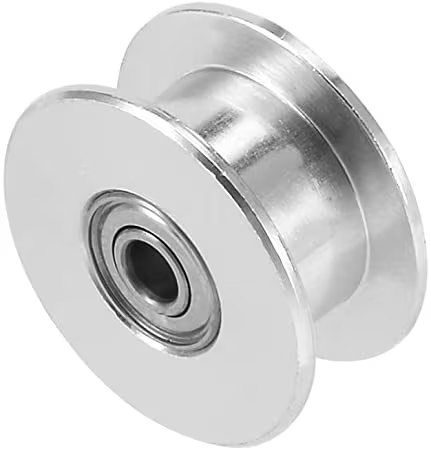
How do flat belt pulleys handle different belt sizes and materials?
Flat belt pulleys are designed to accommodate different belt sizes and materials to ensure efficient power transmission. Here’s a detailed explanation:
1. Belt Sizes:
Flat belt pulleys are available in various sizes to match different belt widths and thicknesses. The width of the pulley’s groove is designed to provide proper contact and grip with the belt. Pulleys with wider grooves are used for wider belts, while narrower grooves are used for narrower belts. The pulley’s diameter may also vary depending on the specific application and power requirements.
2. Belt Materials:
Flat belt pulleys can handle a wide range of belt materials, including:
- Rubber: Rubber belts are commonly used due to their flexibility, high friction coefficient, and resistance to wear. They provide good grip and are suitable for most general-purpose applications.
- Polyurethane: Polyurethane belts offer high resistance to abrasion, oil, and chemicals. They are often used in applications that require superior performance and durability.
- Leather: Leather belts are known for their high strength and flexibility. They are used in applications where a certain level of slip is required or to transmit power in antique or vintage machinery.
- Nylon: Nylon belts are lightweight, have high tensile strength, and offer good resistance to wear and moisture. They are commonly used in applications that require low noise and high load capacity.
3. Belt Tensioning:
Flat belt pulleys should be designed with a tensioning mechanism to accommodate different belt sizes and maintain proper tension. This mechanism, such as an idler pulley or tensioning screw, allows for easy adjustment of the belt tension to ensure optimal power transmission and prevent slippage.
4. Belt Tracking:
To handle different belt sizes and materials, flat belt pulleys should be designed to provide proper belt tracking. This ensures that the belt stays within the pulley’s groove and maintains alignment during operation. Proper flanges or guides are often incorporated into the pulley design to prevent the belt from slipping off or wandering.
5. Material Compatibility:
The materials used in flat belt pulleys should be selected to be compatible with the specific belt materials. For example, if using a rubber belt, the pulley material should not cause excessive wear or damage to the belt’s surface. Compatibility between the pulley and the belt material helps ensure optimal performance and longevity.
By considering these factors, flat belt pulleys can effectively handle different belt sizes and materials, providing reliable power transmission in a wide range of applications.

How do flat belt pulleys differ from other types of pulleys?
Flat belt pulleys have distinct characteristics that set them apart from other types of pulleys. Here’s a detailed explanation:
1. Belt Type:
The major difference lies in the type of belt used. Flat belt pulleys are specifically designed to work with flat belts, which are flexible and have a rectangular cross-section. In contrast, other types of pulleys, such as V-belt pulleys or timing belt pulleys, are designed for different belt profiles, such as V-shaped belts or toothed belts.
2. Belt Engagement:
Flat belt pulleys engage with the belt differently compared to other pulley types. The flat belt wraps around the pulley’s flat or slightly concave surface and relies on friction to transmit power. Other pulley types, like V-belt pulleys, have grooves that match the shape of the belt, providing positive engagement by fitting into the belt’s grooves.
3. Power Transmission:
Each pulley type is optimized for specific power transmission requirements. Flat belt pulleys are often used for applications that require relatively low power and moderate speeds. They are suitable for machinery that needs flexibility and ease of installation, making them commonly used in older machinery and certain industrial applications. Other pulley types, like V-belt pulleys or timing belt pulleys, offer advantages for high-power transmission, increased efficiency, or precise timing in applications such as automotive engines or industrial machinery.
4. Pulley Design:
Flat belt pulleys have a simple design, typically consisting of a cylindrical or disk-shaped body with a flat or slightly concave surface. Other pulley types may have more complex designs to accommodate specific belt profiles. For example, V-belt pulleys have grooves that match the V-shaped belts, while timing belt pulleys have toothed profiles that match the teeth on the timing belts.
5. Speed and Torque Conversion:
The design and configuration of pulleys, including flat belt pulleys, allow for speed and torque conversion. By varying the sizes of the pulleys, the speed and torque can be adjusted to meet the requirements of the machinery. However, the specific mechanisms for speed and torque conversion may differ between pulley types. For example, V-belt pulleys rely on the varying diameters of the pulleys to achieve speed conversion, while timing belt pulleys use the toothed profiles to ensure precise timing and synchronization.
6. Belt Tension and Alignment:
The methods used to maintain belt tension and alignment can also differ between pulley types. Flat belt pulleys often rely on adjustable pulley positions or tensioning mechanisms to achieve proper tension and alignment. Other pulley types may incorporate features like automatic tensioners or specialized tensioning systems to maintain optimal belt performance.
In conclusion, flat belt pulleys differ from other types of pulleys in terms of the belt type, engagement method, power transmission capabilities, design, speed and torque conversion mechanisms, as well as belt tension and alignment methods. Understanding these differences is crucial for selecting the appropriate pulley type for a given application.


editor by CX
2024-05-16

